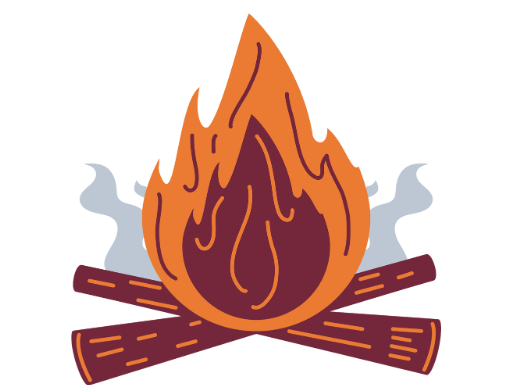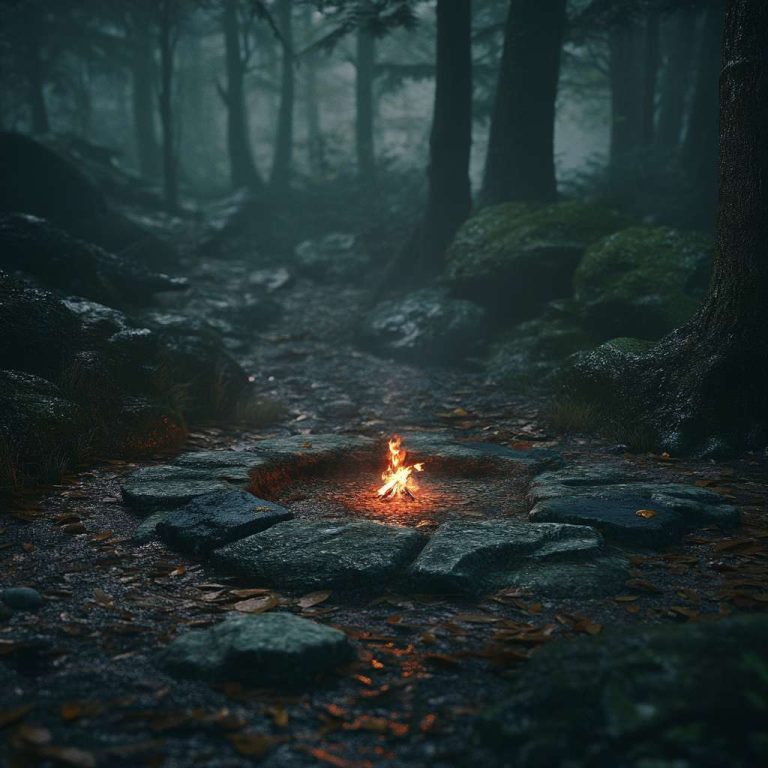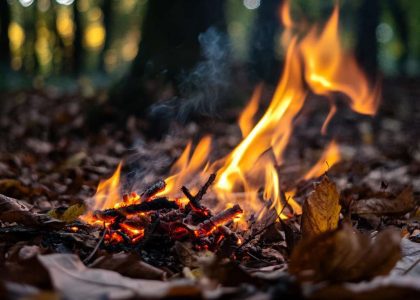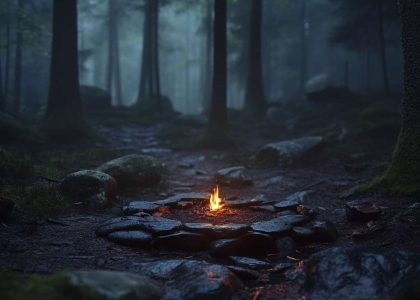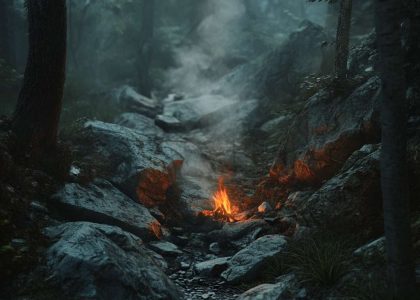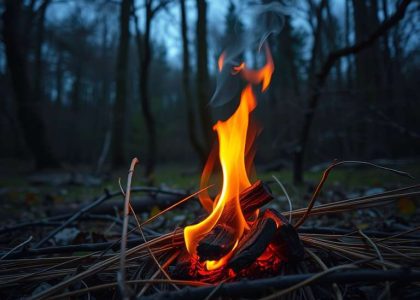Hey there, cozy home enthusiasts! If you’ve ever found yourself dreaming of what it would be like to gather around a crackling fire during chilly evenings, you’re not alone. Each time I sit with friends by a warm glow, I’m reminded of childhood camping trips, where my dad would effortlessly ignite a roaring campfire with just a few sticks and some patience. It always seemed like magic to me, and I still can’t quite get over the charm of a well-started fire.
But let’s face it, starting a fire isn’t as simple as it looks! There are so many tips and tricks out there, and it’s easy to get overwhelmed. I remember one camping trip when I confidently declared, “I can start a fire with sticks!” only to realize I had forgotten some basic concepts. Spoiler alert: it didn’t end well, and I may have had to resort to the emergency matches hidden in my backpack. It taught me that it’s essential to understand what is the proper way to start a fire before diving in.
- Myth 1: You need to be an expert outdoorsman to start a fire with sticks.
Truth: With a little guidance and practice, anyone can learn this skill, regardless of their outdoor experience! - Myth 2: It’s impossible to start a fire with wet wood.
Truth: While challenging, there are techniques to effectively start a fire even when your wood isn’t dry, such as using bark or kindling.
“The best way to predict the future is to create it.” — Peter Drucker
If you’re intrigued and want to master the art of fire-starting, you’re in the right place! I encourage you to check out this fantastic resource on how to light a fire in breezy conditions. It’s packed with useful tips that will elevate your outdoor experience, whether you’re camping, having a backyard bonfire, or cozying up at home by your fireplace.
So grab your sticks and let’s delve into how to start a fire with sticks! Together, we can transform your outdoor gatherings and create warm and inviting atmospheres. Join me on this fiery adventure and let’s light it up! 🔥
Understanding Fire: What is the Proper Way to Start a Fire?
Creating a successful fire relies on mastering essential principles. At the heart of fire-making is the fire triangle, which consists of three critical elements: heat, fuel, and oxygen. Understanding how these components interact is not just beneficial but essential for effectively igniting a fire, especially when using natural methods such as sticks.
- Heat is your ignition source. This can be generated in several ways, from friction methods like the bow drill or hand drill to more straightforward tools like matches or lighter fluid. *When using sticks, the friction method requires practice and patience to achieve the necessary temperature to spark a flame.*
- Fuel provides the material for combustion. For outdoor fire-starting, look for dry materials such as twigs, leaves, and other organic matter. Remember that if you’re trying to start a fire in wet conditions, using dry kindling or selecting materials like resinous pine can greatly enhance your chances of success.
- Oxygen is abundant but necessary. Proper airflow is vital. When arranging your fire setup, consider structures like the teepee or log cabin, which allow for adequate ventilation, ensuring that oxygen reaches the flames and promotes growth.
These principles are especially pertinent when commencing a fire in challenging environments. Particularly in damp areas, it may be beneficial to familiarize yourself with the concept of moisture resistance in fire starters, as it can significantly alter your fire-making strategy.
💡 It’s crucial to remember that the right combination of heat, fuel, and oxygen not only aids in fire-starting but also enhances safety and efficiency during outdoor activities, whether you’re camping or hosting a cozy evening around a fire pit.
How Do You Start a Fire with Sticks? A Step-by-Step Guide
Starting a fire using nothing but sticks is an age-old skill that can come in handy in various situations, from outdoor adventures to cozy evenings around an outdoor fireplace. Whether you’re looking to ignite a small campfire or warm up a fire pit in your backyard, mastering this technique can enhance your fire-starting confidence.
Here’s a comprehensive approach to help you get that essential flame going:
- Gather Necessary Materials: Start by collecting your fire-starting essentials, which include tinder, kindling, and fuel wood. Tinder can be dry leaves, grass, or bark that easily catch fire. Kindling consists of small sticks that will help transition your flame to larger fuel wood, which includes bigger branches.
- Choose Your Method: You can use various techniques to ignite a fire with sticks, but the friction method, particularly the bow drill or hand drill techniques, is among the most popular. Each method requires the creation of a spindle and a hearth board that work together to create heat through friction.
- Prepare Your Tools: For the bow drill method, carve out a spindle and a hearth board. The bow drill involves attaching a string to your spindle and using a bow to rotate it against the hearth board. A solid grip and consistent pressure will help you generate the heat needed to create an ember.
- Generating the Ember: When you rotate the spindle vigorously against the hearth, be patient. You’ll notice fine powder forming, which indicates the friction is working. Keep applying pressure and moving the spindle until you see a small ember form in the dust.
- Transition to Tinder: Carefully transfer your ember to your prepared tinder. Gently blowing on it will help ignite the tinder. Make sure you have ample dry tinder ready to foster a flame, giving your fire the best chance to take hold.
- Dealing with Moisture: If you’re contending with wet conditions, look for inner tree bark or other dry materials that might be sheltered from moisture. You may also explore techniques like a reverse-tapered notch to enhance your chances of success.
🔥 Remember, practice makes perfect. Try these techniques in safe conditions so you can build your skills. Starting a fire with sticks requires patience, but it’s an incredibly rewarding experience once you master it!
| Technique | Description | Best For |
|---|---|---|
| Bow Drill | Uses a bow to rotate a spindle against a hearth board to create friction. | Outdoor fire pits, camping, survival situations |
| Hand Drill | Spins a spindle with your hands directly against the hearth, requiring more effort. | Emergency situations, skill practice |
Starting a Fire in Different Settings: Tips and Techniques
Successfully igniting a fire can vary significantly depending on your chosen setting. Whether you’re inside warming up by a cozy fireplace, preparing dinner over a wood stove, or roasting marshmallows in a fire pit outdoors, understanding how to adapt your fire-starting methods is key.
- Use Seasoned Hardwood in Fireplaces: For optimal performance in a fireplace, select seasoned hardwood. It provides a cleaner burn and maximizes heat output. Begin your fire by layering tinder and kindling using a teepee structure that allows for good airflow, ensuring your fire catches quickly.
- Prioritize Ventilation with Wood Stoves: When using a wood-burning stove, ensure there’s adequate ventilation. Dry wood is critical to avoiding smoke buildup. The top-down burning method can work well here, where you place larger logs on the bottom and smaller kindling on top, resulting in a sustained fire with minimal fuss.
- Strategic Wood Arrangement in Fire Pits: In fire pits, arrange the wood to enhance airflow. A crisscross pattern works effectively, allowing flames to reach all pieces evenly. This method not only promotes a steady burn but also makes it easier to control the fire for cooking or ambiance.
- Dealing with Wet Wood: If you encounter wet wood, don’t despair. Splitting the logs exposes dry inner layers that are more likely to ignite. Consider using natural fire starters like birch bark or even dryer lint, which can provide the initial spark needed. Additionally, a fire starter gel can help achieve reliable results when conditions are less than ideal.
Understanding the specifics of each environment you’re working with can dramatically increase your chances of successfully starting and maintaining a fire. Whether it’s a cold winter’s night by the indoors or an adventurous evening outdoors, mastering these techniques can transform your experience with fire.
| Setting | Key Technique | Considerations |
|---|---|---|
| Fireplace | Use seasoned hardwood & teepee method | Ensures cleaner burn and better heat |
| Wood Stove | Top-down burning method | Requires good ventilation; use dry wood |
| Fire Pit | Crisscross wood arrangement | Promotes airflow and enhances flame control |
| Dealing with Wet Wood | Split wood and use natural starters | Exposes dry sections, consider using gels |
Alternative Methods: How to Start a Fire Without a Lighter
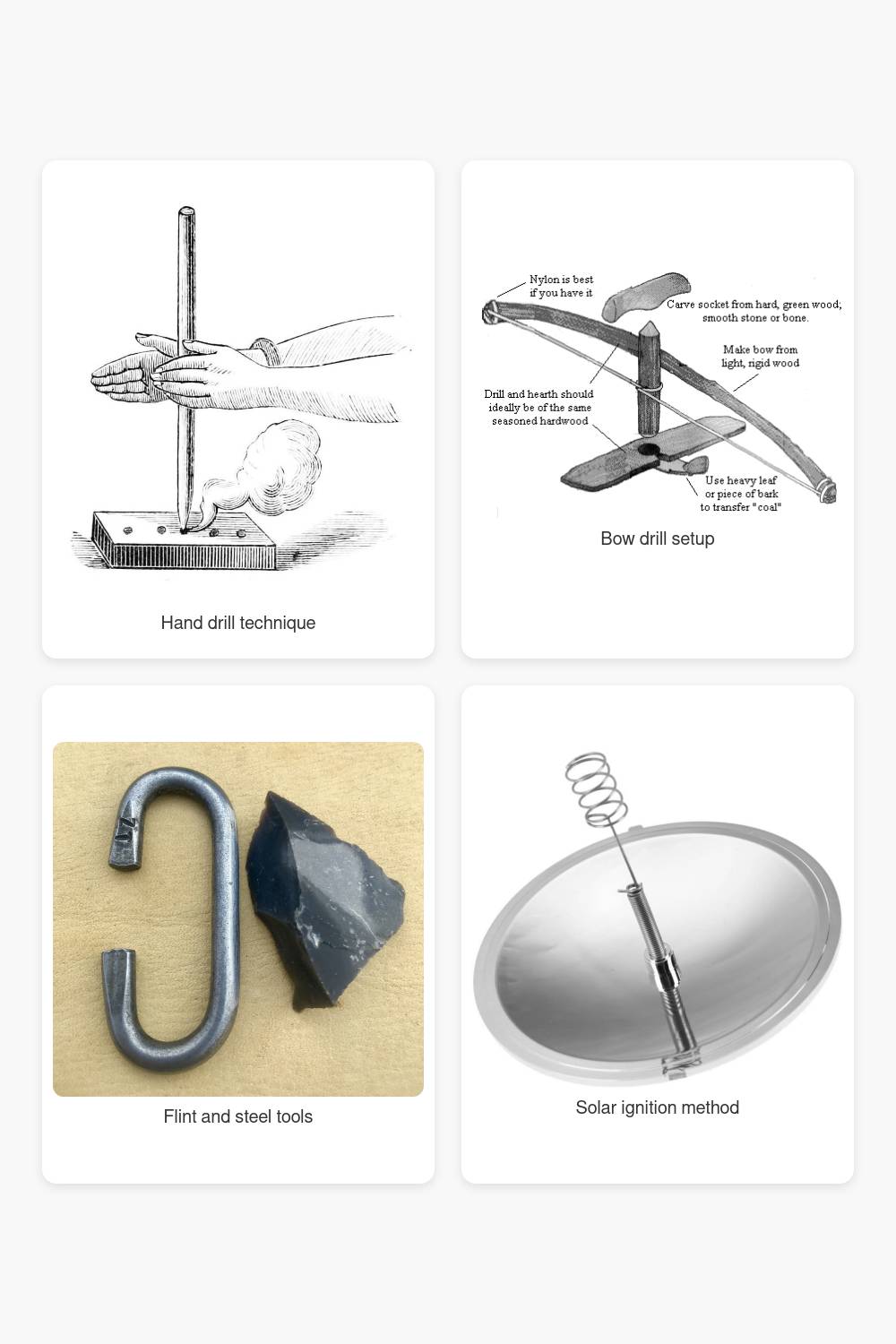
While lighters and matches are convenient, they’re not always available in every situation. Learning to start a fire with alternative methods can be a rewarding and essential skill, especially when you’re out camping or hiking, or even in your backyard fire pit on a chilly evening. Here are several traditional techniques to help you ignite a blaze using natural tools and materials.
- Hand Drill Technique: This classic method utilizes friction to generate heat. By spinning a vertical spindle against a flat hearth board made of dry wood, you create enough friction to ignite fine tinder. *Practice is key* — the more you refine your technique, the more successful you’ll be.
- Bow Drill Method: A step up from the hand drill, the bow drill allows for more efficient spinning of the spindle. Using a bow to rotate the spindle increases friction significantly, making it easier to produce an ember. *This method can be a bit challenging at first, but perseverance pays off.*
- Flint and Steel: For those who have access to flint, striking it against steel can create sparks that ignite dry tinder. This method is both effective and quick, making it a favorite among outdoor enthusiasts. *It’s a reliable choice for camping and wilderness adventures.*
- Solar Ignition: Using the sun’s rays is another fascinating method. With a magnifying glass or a piece of clear plastic, you can focus sunlight onto a small pile of tinder, igniting it with just one concentrated beam. *A great option if you’re in a sunny area and want to show off your resourcefulness!*
- Natural Kindling: In adverse weather conditions, it’s crucial to improvise with what’s available. Inner bark of trees or dried pine needles can serve as excellent kindling. These materials catch fire easily and can help get your main fuel burning, even if the wood itself is damp.
Practicing these methods will enhance your understanding of fire dynamics and improve your confidence in various environments. Always be mindful of safety when building a fire, whether it’s in a controlled fireplace or out in nature. 🔥 For those interested in igniting materials they can use at home, understanding charcoal starter techniques can complement your fire-building skills.
| Method | Tools Needed | Difficulty Level | Use Cases |
|---|---|---|---|
| Hand Drill | Spindle, hearth board | Medium | Backyard, wilderness |
| Bow Drill | Spindle, hearth board, bow | Hard | Camping, survival |
| Flint and Steel | Flint, steel, tinder | Easy | Camping, backpacking |
| Solar Ignition | Magnifying glass, tinder | Medium | Sunny environments |
| Natural Kindling | Dried bark, pine needles | Easy | Wet conditions, starting fires |
Troubleshooting: Common Issues When Starting a Fire and Solutions
Even with the best intentions and materials, starting a fire with sticks can sometimes lead to frustration. Understanding common hurdles can significantly improve your success rate. Here’s a look at typical challenges and practical solutions to address them.
- Inadequate materials: Selecting the right tinder is crucial. Use dry items like bark, dry grass, or even small twigs. If you’re working with moist wood, seek out dry kindling or utilize bark from birch trees, known for their readiness to ignite.
- Friction technique problems: To successfully generate heat using methods like the hand drill or bow drill, ensure the surfaces are smooth and properly aligned. If you’re struggling to produce a spark, try adjusting the pressure or speed of your movements while drilling.
- Environmental factors: Wind and moisture can be significant barriers when attempting to start a fire. Positioning a natural windbreak or using your body to shield the flame can create a more conducive environment for ignition.
- Limited practice: Familiarizing yourself with fire-starting techniques in varied conditions will enhance your overall proficiency. *Consider practicing in different weather scenarios to prepare for the unexpected.*
- Lack of backup materials: Having reliable fire-starting alternatives, like eco-friendly igniters or a lightweight emergency fire kit, ensures that you’re never left in a lurch. This can especially ease concerns when venturing out for camping or hiking.
Once you’ve tackled these common issues, you’ll find the tips and techniques outlined, such as fire starter burn times, can be invaluable in boosting your confidence when your modern tools are nowhere to be found. 🔥
Safety Tips for Fire Starting: Ensuring a Controlled Burn
Starting a fire can be an exhilarating experience, whether you’re snuggled up near a hearth at home or enjoying the great outdoors around a cozy fire pit. However, safety should always be your top priority. Following essential practices can help ensure that your fire remains controlled and safe for everyone involved.
- Choose the Right Location: Always start fires in an open area, far from flammable materials like brush, dry leaves, or overhanging branches. A clear ground surface minimizes the risk of accidental ignition.
- Have Fire Control Tools Ready: Keep a water source, shovel, or fire extinguisher nearby for swift action in case the flames require suppression. Being prepared can prevent a small spark from becoming a significant problem.
- Never Leave a Fire Unattended: Supervision is crucial, especially in windy conditions where embers can drift. Always have an adult present to monitor the fire, ensuring that it stays contained and manageable.
- Select Appropriate Materials: When using natural fire starters like sticks, select dry wood found on dead branches, which ignite more easily. Allow the flames to build before adding larger logs, ensuring a robust and healthy fire.
- Comply with Local Regulations: Familiarize yourself with local fire laws and guidelines, especially when building campfires in designated areas. Understanding and respecting these rules helps prevent wildfires.
- Completely Extinguish the Fire: Once you’re finished, extinguish the fire thoroughly with water. Ensure that the ashes are cool to the touch and check for any remaining hot spots to confirm that it’s entirely out.
By adhering to these practices, you can enjoy the warmth and ambiance of your fire features such as fireplaces, wood stoves, or outdoor fire pits with peace of mind. 🔥
| Safety Tip | Description |
|---|---|
| Location Safety | Start fires in a spacious area, away from flammable objects. |
| Fire Control Tools | Have immediate suppression tools on hand for emergencies. |
| Supervision Required | Always monitor the fire, especially in windy conditions. |
| Material Selection | Use dry wood for ignition and build gradually. |
| Know Local Laws | Understand fire regulations and campfire guidelines. |
| Extinguishment Process | Thoroughly douse the fire and check for smoldering ashes. |
Frequently Asked Questions
Have questions about starting a fire with sticks? Check out these common inquiries to enhance your fire-starting skills and ensure a safe experience.
